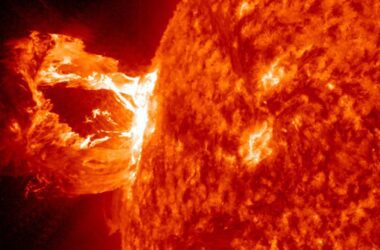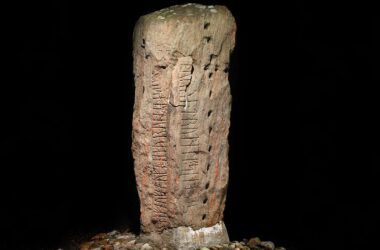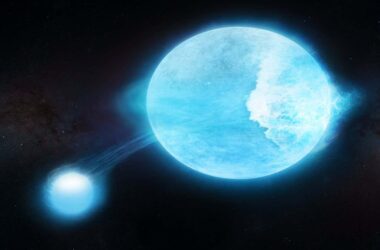If India’s Chandrayaan-3 mission successfully lands down today near the lunar south pole, it will become only the fourth country to do so. It will also be the first country to investigate the Arctic, which may have abundant supplies of fresh water.
Chandrayaan-3, named after the Sanskrit word for “mooncraft,” was launched by the Indian Space Research Organisation (ISRO) on a Launch Vehicle Mark-III rocket from the southern state of Andhra Pradesh on July 14 and has spent the past six weeks travelling approximately 380,000 kilometres on its way to the moon.
The mission has entered lunar orbit, and the Vikram lander is getting ready to land in an area where there may be water reserves, which would make it easier to establish a permanent lunar colony there.
The previous Chandrayaan-2 mission failed in 2019 when the Vikram lander crashed into the moon’s surface due to a software error. It was lost along with the Pragyan rover it was carrying, a six-wheeled vehicle designed to explore the south pole of the moon.
A lunar orbiter and a probe built to crash into the Moon at high speed were used in the earlier Chandrayaan-1 mission, which also aimed for the moon’s south pole. The latest Indian expedition will land gently and conduct scientific study.
Similar to Chandrayaan-2, but without an orbiter, Chandrayaan-3 will be a mission to the moon. Instead of using a satellite to relay messages to and from Earth, the Vikram lander and rover will do so autonomously. Officials have estimated the landing will occur at around 6 p.m. Indian time (12:30 gmt). The rover will only survive the lunar environment for two weeks after it is released.
Only three countries—the United States, the Soviet Union, and China—have accomplished a safe lunar landing. In April, a private attempt by a Japanese start-up failed when it, too, smashed into the surface at high speed. This week also saw the failure of Russia’s newest attempt at lunar exploration, the country’s first moon mission in nearly half a century. The Russian space agency Roscosmos said that the Luna 25 lander “cease[d] to exist” after crashing into the surface with too much force following what was supposed to be a brief engine firing to reorient it.
In a tweet, the ISRO claimed that the mission control is “buzzed with energy & excitement” as the landing approaches, adding that everything is proceeding according to plan.
According to Shri Charan Padala of GlobalData, a data analytics and consulting organisation, “the south pole of the moon is thought to be rich in water ice, which could be used to produce fuel for spacecraft,” among other resources. If Chandrayaan-3 is able to successfully land in the south pole, India will have a significant advantage in creating the infrastructure and technologies required to extract these resources.
FAQs
- What is the Chandrayaan-3 mission?
- Chandrayaan-3 is India’s lunar exploration mission, aimed at landing on the moon’s south pole to study its surface and potentially discover resources like water ice.
- Why is exploring the lunar south pole important?
- The lunar south pole is believed to have water ice, which could be crucial for supporting future space missions and generating fuel for spacecraft.
- How is Chandrayaan-3 different from Chandrayaan-2?
- Unlike Chandrayaan-2, Chandrayaan-3 focuses solely on the moon landing, without an orbiter. The Vikram lander and rover will communicate autonomously with Earth.
- What happened during the previous Chandrayaan-2 mission?
- Chandrayaan-2’s Vikram lander crashed on the moon’s surface in 2019 due to a software error, leading to the loss of the Pragyan rover it carried.
- Which countries have successfully landed on the moon?
- Only the United States, the Soviet Union, and China have accomplished safe lunar landings, with India aiming to join this elite group through Chandrayaan-3.







